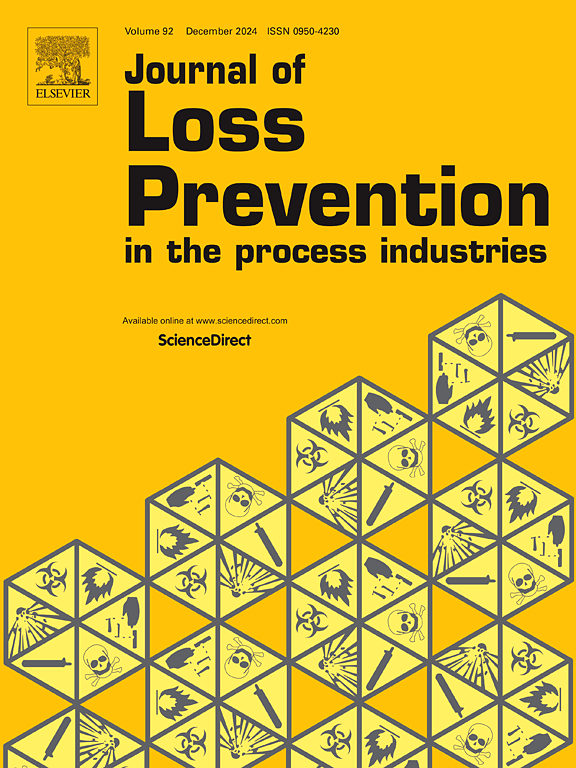Physical modeling for emergency planning support: Gas dispersion simulations in urban and rural areas
IF 3.6
3区 工程技术
Q2 ENGINEERING, CHEMICAL
Journal of Loss Prevention in The Process Industries
Pub Date : 2025-01-31
DOI:10.1016/j.jlp.2025.105571
引用次数: 0
Abstract
Protecting public health and ensuring environmental safety are essential for sustainable urban development, especially in the vicinity of industrial sites. This study evaluates the performance of ISC3, a Gaussian gas dispersion model, by comparing its predictions with wind tunnel data for idealized urban and rural environments. The analysis shows that the ISC3 model significantly underestimates pollutant concentrations in urban areas, particularly along transversal streets near the source, e.g. due to its inability to accurately represent complex flow patterns such as recirculation zones. This underestimation poses a risk to emergency preparedness and urban planning. In contrast, in rural areas, the ISC3 model generally overestimates concentrations, but this overestimation remains within acceptable limits, providing a more reliable prediction. The case study concludes that while Gaussian models are useful for initial assessment in areas of low roughness, their accuracy decreases in complex urban environments. For more accurate predictions in such environments, wind tunnel modelling is recommended as a more robust tool for site-specific risk assessment for land-use planning and emergency preparedness purposes.
支持应急规划的物理模型:城市和农村地区的气体扩散模拟
保护公众健康和确保环境安全对于可持续城市发展至关重要,特别是在工业场地附近。本研究通过将ISC3(一种高斯气体分散模型)的预测结果与理想城市和农村环境下的风洞数据进行比较,评估了该模型的性能。分析表明,ISC3模型严重低估了城市地区的污染物浓度,特别是在靠近污染源的横向街道上,例如,由于它无法准确地代表复杂的流动模式,如再循环区。这种低估给应急准备和城市规划带来风险。相比之下,在农村地区,ISC3模型通常高估了浓度,但这种高估仍然在可接受的范围内,提供了更可靠的预测。案例研究得出结论,虽然高斯模型对低粗糙度地区的初始评估有用,但在复杂的城市环境中,其准确性会下降。为了在这种环境中进行更准确的预测,建议将风洞模型作为一种更可靠的工具,用于土地使用规划和应急准备目的的具体地点风险评估。
本文章由计算机程序翻译,如有差异,请以英文原文为准。
求助全文
约1分钟内获得全文
求助全文
来源期刊
CiteScore
7.20
自引率
14.30%
发文量
226
审稿时长
52 days
期刊介绍:
The broad scope of the journal is process safety. Process safety is defined as the prevention and mitigation of process-related injuries and damage arising from process incidents involving fire, explosion and toxic release. Such undesired events occur in the process industries during the use, storage, manufacture, handling, and transportation of highly hazardous chemicals.

 求助内容:
求助内容: 应助结果提醒方式:
应助结果提醒方式:


